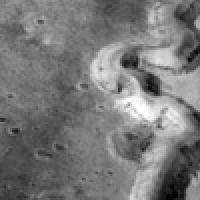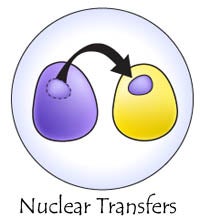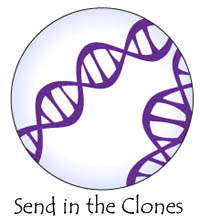Life on other planets. Is it possible? Are there going to be little green people, or a friendly Martian? This PLoS article is the story about how scientists are looking for life beyond our planet.
 Courtney Bruce
Courtney Bruce
molecular instructions that guide how all living things develop and function
https://en.wikipedia.org/wiki/DNALife on other planets. Is it possible? Are there going to be little green people, or a friendly Martian? This PLoS article is the story about how scientists are looking for life beyond our planet.
 Courtney Bruce
Courtney Bruce
If you look at a stretch of hot, open desert, you can’t imagine anyone calling it home. But soil specialist Professor Ferran Garcia-Pichel arrives at the scene equipped with forensic investigation tools. His goal—make the invisible visible!
Just like a crime scene investigator, he knows that all living things leave behind hidden tracks. To find out who has been sitting in his soil he has his two modus operandi—methods of operation—to uncover the inhabitants’ identities.
From the time of Aristotle, scientists have been arranging living things in order to study and understand them. The science of classifying living things is called taxonomy.
In a classification, a taxon is a group, and the smallest taxon is the species. Usually, only members of the same species can mate with each other and produce young—or seeds, in the case of plants. There are some exceptions to this rule, but often the young of mixed species cannot reproduce or do not survive well in the wild.
DNA is the ultimate how-to guide used by all living things. It packages all the instructions for building maintaining all our life forms and it easily fits inside a cell.
Also in: Español
There are several issues that are brought up by cloning. The logical conclusion to most research done with cloning is the question of cloning people. Cloning of people is currently illegal in the United States and many other countries. There are two main applications of cloning that bring up serious legal and ethical questions.
In order for cells to become whole organisms, they must divide and differentiate. Cells divide all the time. That means that just one cell, a fertilized egg, is able to become the trillions of cells that make up your body, just by dividing. Those trillions of cells are not all the same though.

Scientists found that they could make clones through a process called nuclear transfer. Nuclear transfer uses the technology that puts a sperm into an egg for artificial fertilization, but takes it a step further.
We just learned that a clone is someone who shares your DNA, like identical twins. What's the big deal then? If we have clones running around, going to school, playing with other kids like you, why is cloning making the evening news? Cloning is such a big deal because of two reasons. Reason number one is that we can do it outside of the mother. Reason number two is that we can put DNA from wherever we want to take it from and put it into another cell.
